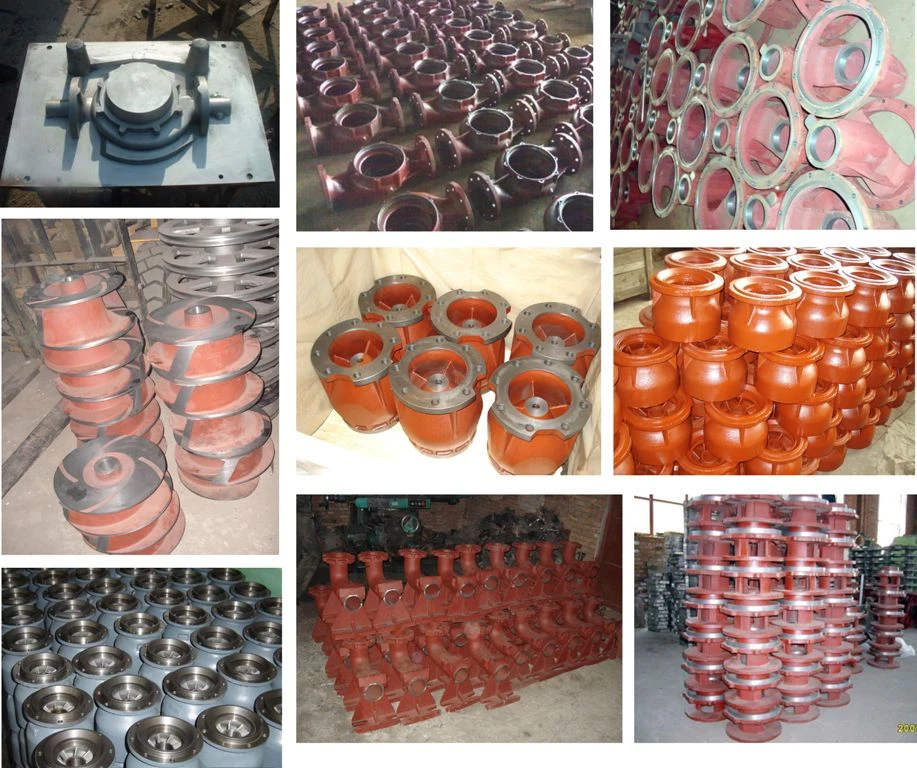Mobile:+86-311-808-126-83
Email:info@ydcastings.com
pump parts
Understanding Pump Parts An Essential Guide for Efficient Operation
Pumps are ubiquitous in various industries, from water treatment plants to oil refineries, and they play a crucial role in the efficient transport of fluids. The functionality and reliability of a pump largely depend on the quality and condition of its parts. This article explores the essential components of pumps, their functions, and the importance of maintenance for optimal performance.
Key Components of Pump Systems
1. Impeller The impeller is the heart of a pump, responsible for converting rotational energy into fluid flow. It consists of a central hub with blades extending outward. When the impeller spins, it generates centrifugal force that pushes the fluid outwards and creates suction at the inlet. The design of the impeller significantly affects the pump's efficiency and performance, making it a critical component in pump design.
2. Volute The volute is a spiral-shaped casing that surrounds the impeller. Its primary function is to capture the fluid exiting the impeller and convert its kinetic energy into pressure. The shape and size of the volute are crucial in determining the pump's efficiency and flow characteristics. A well-designed volute minimizes turbulence and energy loss, contributing to better performance.
3. Suction and Discharge Pipes These pipes transport fluids to and from the pump. The suction pipe carries fluid into the pump, while the discharge pipe directs the fluid out. Proper sizing and installation of these pipes can prevent issues such as cavitation—a condition where vapor bubbles form and collapse inside the pump, potentially causing damage.
4. Seals and Gaskets Seals and gaskets are essential for preventing fluid leaks and ensuring that the pump operates efficiently. They keep the fluids contained within the pump housing and protect internal components from contaminants. Various materials are used for seals and gaskets, including rubber, PTFE, and graphite, each selected based on the specific application and fluid properties.
5. Bearings Bearings support the rotating parts of the pump, allowing them to move smoothly. They reduce friction and wear on the pump shaft and ensure that the impeller rotates accurately. Properly maintained bearings can extend the lifespan of a pump and reduce downtime.
6. Pump Shaft The pump shaft connects the impeller to the motor, transmitting the rotational energy necessary for the pump's operation. It must be robust and resistant to wear, as it experiences significant stress during operation. The material and design of the shaft can vary based on the pump type and the fluids being pumped.
pump parts

7. Motor Although not technically a part of the pump itself, the motor is crucial for the pump's operation. It provides the energy needed to turn the impeller and, ultimately, drive the fluid through the system. Electric motors are the most common, but pumps can also be powered by diesel engines or even wind power in some applications.
Importance of Pump Maintenance
Regular maintenance of pump parts is vital for maximizing performance and extending the lifespan of the equipment. Neglecting maintenance can lead to decreased efficiency, increased operational costs, and even catastrophic failures. Here are some key maintenance practices
- Routine Inspections Conducting regular inspections helps identify wear and tear on critical components such as seals, bearings, and the impeller. Early detection can prevent more significant issues down the line.
- Lubrication Proper lubrication of the bearings and moving parts is essential to reduce friction and wear. Using the correct type of lubricant and maintaining appropriate levels can enhance operational efficiency.
- Cleaning Accumulation of debris or sediment can affect pump performance. Regular cleaning of the pump and surrounding areas helps maintain efficiency and prevents damage to internal components.
- Monitoring Performance Keeping track of the pump’s operating parameters—such as flow rate, pressure, and temperature—can provide insights into its condition. Any deviation from the norm should prompt immediate investigation.
Conclusion
Understanding pump parts and their functions is crucial for anyone involved in industrial operations or maintenance. By recognizing the significance of each component and maintaining them effectively, operators can ensure that their pumps run smoothly and efficiently. Investing time and resources in maintaining these essential equipment pieces pays off in increased reliability, reduced downtime, and enhanced overall performance. Whether in water supply, chemical processing, or any other application, well-maintained pumps are the backbone of efficient fluid management.
-
Impeller Technology That Powers Precision in Pump SystemsNewsMay.22,2025
-
Valve Durability Begins with Quality Cast Iron ComponentsNewsMay.22,2025
-
Performance Cooling with Advanced Automobile Water Pump SolutionsNewsMay.22,2025
-
How Motor Housing and Oil Pans Shape Engine PerformanceNewsMay.22,2025
-
How Metal Castings Drive Modern Manufacturing EfficiencyNewsMay.22,2025
-
Exploring the Engineering Behind Valve Body CastingsNewsMay.22,2025











